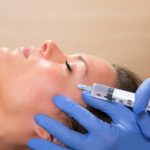Introduction to At-Home Body Contouring Devices
Body contouring devices designed for home use have become a buzzworthy trend in recent years. As more people in the U.S. look for convenient ways to shape their bodies without visiting a clinic, these devices are making waves on social media and in everyday conversations. But what exactly are at-home body contouring devices, and why are they suddenly so popular?
At-home body contouring devices are compact machines or handheld gadgets that claim to help reduce fat, tighten skin, and sculpt certain areas of the body—all from the comfort of your living room. They promise similar benefits to professional treatments, but with a lower cost and no need for appointments. This convenience is a big part of their rising popularity across the United States.
Why Are At-Home Devices So Popular?
There are several reasons behind the growing interest in these products:
- Affordability: One-time purchase versus multiple expensive clinic visits
- Privacy: Treat yourself at home without anyone knowing
- Convenience: No need to schedule time off work or travel to a clinic
- Control: Use the device on your own schedule, as often as desired (within guidelines)
Types of Technologies Used in At-Home Devices
The technology inside these devices varies widely. Here’s a simple overview of the most common types you’ll find on the American market:
| Technology | How It Works | Main Benefits |
|---|---|---|
| Radiofrequency (RF) | Uses radio waves to heat up deeper layers of skin, encouraging collagen production and tightening skin | Smoother, firmer-looking skin; mild fat reduction |
| Cryolipolysis (Fat Freezing) | Lowers temperature of fat cells to break them down over time | Reduces stubborn fat bulges; non-invasive alternative to liposuction |
| Ultrasound Cavitation | Sends sound waves into fatty tissue to disrupt fat cells | May help shrink targeted fat areas; generally painless |
| LED/Laser Therapy | Uses light energy to stimulate skin or affect fat cells | Improves skin tone; some devices claim fat reduction effects |
| TENS/EMS (Electrical Muscle Stimulation) | Sends electrical impulses to muscles causing them to contract | Tones and strengthens muscles; can enhance muscle definition |
A Growing Trend Across America
You’ll find at-home body contouring devices sold everywhere from Amazon and big box stores like Target or Walmart, to specialty beauty retailers and direct-to-consumer brands online. With promises of visible results in weeks and minimal downtime, it’s easy to see why Americans are giving these gadgets a try.
2. Benefits of At-Home Body Contouring
At-home body contouring devices have become increasingly popular across the United States, and it’s easy to see why. These devices offer several benefits for people looking to enhance their shape without visiting a professional clinic. Here are some of the main advantages:
Convenience
One of the biggest reasons people choose at-home body contouring is convenience. You can use these devices any time that fits your schedule—whether it’s early in the morning before work or late at night while watching TV. There’s no need to book appointments, commute, or wait in a busy office. Everything happens on your terms, right in the comfort of your home.
Affordability Compared to Professional Treatments
Professional body contouring sessions can be expensive, especially if you require multiple visits. In contrast, most at-home devices involve a one-time purchase. This makes them a budget-friendly option for many Americans who want results without breaking the bank. Below is a simple comparison:
| Option | Upfront Cost | Ongoing Expenses |
|---|---|---|
| Professional Treatments | $200–$1,000+ per session | Multiple sessions often needed |
| At-Home Devices | $100–$500 (one-time) | Minimal (replacement gels/pads) |
Privacy
For many people, privacy is important when it comes to body treatments. Using an at-home device means you don’t have to undress in front of strangers or discuss personal concerns with a technician. Everything stays private and comfortable, making it easier for some users to stay consistent with their routine.
Flexibility
At-home body contouring gives you total control over your treatment plan. You can adjust how often you use the device, focus on specific areas as needed, and adapt your routine as your goals change. This flexibility allows you to fit treatments into your lifestyle without major disruptions.
Key Takeaways: Why People Love At-Home Body Contouring Devices
- No travel or appointments required—use anytime at home.
- Saves money compared to professional clinics.
- Keeps your beauty routines private.
- Easily fits around your daily life and needs.
If you’re looking for an accessible way to support your body goals, at-home contouring devices offer several attractive benefits worth considering.

3. Potential Drawbacks and Limitations
Effectiveness Compared to Clinical Treatments
Many people are drawn to at-home body contouring devices because of convenience and lower cost. However, one of the main concerns is whether these devices can really deliver results similar to those you’d get at a professional clinic. Most at-home devices use less powerful technology than what licensed providers can offer, which means results may be milder or take longer to notice.
| Aspect | At-Home Devices | Professional Treatments |
|---|---|---|
| Technology Strength | Milder energy levels for safety | Higher, more effective settings under supervision |
| Results Timeline | Gradual; requires consistent use over weeks/months | Often faster, with visible changes in fewer sessions |
| Expected Outcomes | Smoother skin, minor fat reduction | Dramatic sculpting, targeted fat loss |
User Safety Concerns
Another important factor is safety. While at-home devices are designed to be user-friendly, incorrect use can lead to side effects like redness, burns, or skin irritation. Unlike in-clinic treatments that are performed by trained professionals, users at home may not always follow instructions carefully or might use the device on unsuitable areas of the body.
Common User Errors:
- Using higher settings than recommended for their skin type
- Treating sensitive or contraindicated areas (like over tattoos or broken skin)
- Not following time or frequency guidelines, leading to overuse
Consistency of Results
The effectiveness of at-home devices can also depend heavily on the users consistency and technique. Some people may see good results if they follow the instructions closely, while others may not notice much change if they skip sessions or don’t use the device correctly. This makes outcomes unpredictable compared to professional treatments where protocols are strictly followed.
Possible Risks and Side Effects
No treatment is risk-free. With at-home body contouring devices, possible risks include mild discomfort during or after use, temporary redness, swelling, or even minor burns if misused. People with certain medical conditions or implants should avoid these devices altogether.
Summary Table: Potential Risks and Side Effects
| Risk/Side Effect | Description |
|---|---|
| Redness/Irritation | Mild and usually short-term; caused by heat or suction mechanisms. |
| Burns/Blisters | Rare but possible with improper use or on sensitive skin types. |
| Ineffective Results | Lack of noticeable improvement due to inconsistent use or low device power. |
| Device Malfunction | Poor-quality products may break down or work unpredictably. |
| Sensitivity Issues | Pain or discomfort in treated areas, especially for those with underlying conditions. |
4. Who Should and Shouldn’t Consider At-Home Devices
At-home body contouring devices have become more popular for people looking to smooth, tighten, or shape their bodies without visiting a clinic. However, these devices arent right for everyone. Here’s a breakdown of who might benefit from using them and who should consider professional treatments instead.
Who Might Benefit From At-Home Devices?
At-home devices can be a good option for certain individuals and body types. If you have minor concerns or are looking for maintenance between professional sessions, these devices may be helpful. Here are some examples:
| Best For | Why |
|---|---|
| People with mild fat deposits or slight skin laxity | Results are subtle and work best on small problem areas |
| Those looking for gradual improvements | Devices require consistent use over time to see changes |
| Individuals comfortable with self-care routines | Using these devices requires following instructions carefully and sticking to a schedule |
| People wanting convenience and privacy | You can treat yourself at home without appointments or travel |
Who Should Think Twice?
At-home body contouring isn’t the best fit for everyone. Some people will get better results—or stay safer—with professional help. Consider professional treatments if you fall into any of these categories:
- You have significant fat deposits or loose skin: At-home devices usually don’t deliver dramatic results, especially for larger treatment areas.
- You have underlying health conditions: Issues like heart disease, diabetes, or skin disorders may make home treatments risky.
- You want fast or guaranteed results: Professional procedures tend to be stronger and more predictable in their outcomes.
- You’re unsure about how to use the device safely: Incorrect usage can cause burns, irritation, or other side effects.
- Your skin is sensitive or you have allergies: Some devices may irritate sensitive skin types.
Quick Comparison Table: At-Home vs. Professional Body Contouring
| At-Home Devices | Professional Procedures | |
|---|---|---|
| Treatment Areas | Small, targeted zones | Larger areas possible |
| Results Timeline | Slow; weeks to months with regular use | Sooner; sometimes after one session |
| Safety & Supervision | User-dependent, less regulated | Supervised by trained providers |
| Cost Over Time | Lower upfront; may need repeat purchases | Higher per session but fewer sessions needed |
| Sensitivity Concerns | Bigger risk for sensitive skin if not used correctly | Treatments tailored to your needs by professionals |
The Bottom Line: Personalized Approach Matters Most
If you’re thinking about trying at-home body contouring, consider your goals, lifestyle, and overall health. While some people enjoy the flexibility and affordability of at-home options, others will see better, safer results with help from trained professionals. Always check with your doctor before starting new treatments—especially if you have medical concerns or unique skin needs.
5. Tips for Safe and Effective Use
At-home body contouring devices can be a convenient way to enhance your appearance, but using them safely and effectively is key. Here are some easy-to-follow tips to help you get the best results while keeping your health in mind.
Do Your Research Before Buying
Not all body contouring devices are created equal. Before making a purchase, take time to research different brands and models. Look for products that have been cleared by the FDA or have positive reviews from reputable sources. Reading customer feedback and expert opinions can also help you spot potential issues or benefits.
| What to Check | Why It Matters |
|---|---|
| FDA Clearance | Ensures the device meets safety standards in the US |
| User Reviews | Learn from real-life experiences of other buyers |
| Manufacturer Reputation | Trusted brands often offer better customer support and quality control |
| Return Policy & Warranty | You’ll want options if the device doesn’t work for you |
Follow Manufacturer Instructions Carefully
Every device comes with specific guidelines on how to use it. Always read the instruction manual before your first session. Pay close attention to:
- Usage Frequency: Overuse may increase risks like skin irritation or burns.
- Application Areas: Only use the device on recommended body parts.
- Preparation Steps: Clean and dry your skin as directed.
- Aftercare Advice: Some devices require special lotions or cooling gels post-treatment.
Consult with a Healthcare Provider
If you have any medical conditions—such as heart problems, diabetes, skin disorders, or implanted devices like pacemakers—talk with your doctor before starting any at-home treatment. Even if you’re healthy, a quick check-in with a healthcare provider can give you peace of mind and personalized advice based on your needs.
Questions to Ask Your Doctor:
- Is this type of device safe for my health conditions?
- Could it interact with any medications I’m taking?
- What results should I realistically expect?
- Are there safer alternatives for my goals?
Be Patient and Manage Expectations
At-home body contouring devices usually offer gradual results over weeks or months. Don’t expect dramatic changes overnight. Consistency and proper use are essential for seeing improvement while minimizing risks.
6. The Bottom Line
When it comes to at-home body contouring devices, there’s a lot to consider before making a purchase. These gadgets promise convenience and privacy, but they’re not a one-size-fits-all solution. Here’s a quick breakdown to help you figure out if at-home body contouring is the right choice for you:
| Pros | Cons |
|---|---|
|
|
Key Points to Consider
- If you want convenience and are okay with gradual results, at-home devices might fit your lifestyle.
- If you’re looking for dramatic changes or have specific concerns, a professional treatment could be a better option.
- Always check if the device is FDA-cleared and read reviews from real users before buying.
- Remember that healthy habits like diet and exercise play a big role in achieving your goals.
- If you have health conditions or sensitive skin, talk to your doctor before trying any device.
Choosing an at-home body contouring device depends on your needs, expectations, and budget. Take some time to weigh the pros and cons so you can make the best decision for yourself.


